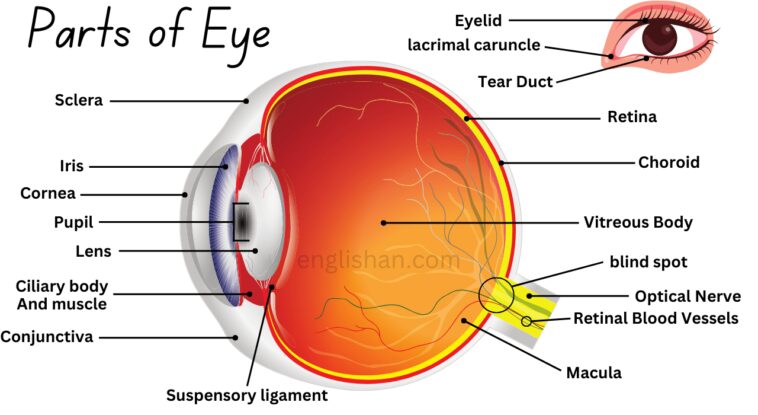The eye is a complex organ responsible for vision in humans and many animals. It detects and processes visual information from the surrounding environment, allowing individuals to perceive shapes, colors, and depth. The eye works by receiving light through the cornea and lens, which focus the light onto the retina. The retina contains photoreceptor cells (rods and cones) that convert light stimuli into electrical signals. The eye’s ability to adjust focus, perceive colors, and adapt to varying light conditions contributes to its crucial role in the sensory experience of sight.
What is the Eye?
The eye is a complex sensory organ that plays a fundamental role in the sense of sight for humans and many animals. It enables the perception of visual stimuli by detecting and processing light. The human eye, specifically, is a sophisticated optical system consisting of various structures that work together to capture, focus, and transmit visual information to the brain.
How Does the Human Eye Work?
The human eye works like a sophisticated camera to help us see. Light comes into the eye through the front part called the cornea. The colorful part called the iris, adjusts the size of the black center, called the pupil, depending on how much light there is. The lens inside focuses the light onto the back part is called the retina.
The retina is like a screen that senses light. It has special cells that turn light into signals sent to the brain through the optic nerve. The brain then turns these signals into the images we see.
Our eyes work together to create a 3D picture, and they can adjust focus to see things up close or far away. Tears keep our eyes moist, and this helps us see better. So, our eyes are like amazing cameras that work with our brains to let us enjoy the world around us!

What are the Different Parts of an Eye?
The human eye is a complex organ with several parts working together to enable vision.
Here are the main parts are as follows:
Cornea: The clear front surface that helps focus incoming light in.
Iris: The colored part that controls the size of the pupil, regulating the amount of light entering it.
Pupil: The black, adjustable opening at the center of the eye that allows light to enter.
Lens: Located behind the pupil, it focuses light onto the retina, adjusting for clear vision at different distances.
Retina: The inner layer containing light-sensitive cells (rods and cones) that convert light into electrical signals.
Optic Nerve: A bundle of nerve fibers that carries these signals from the retina to the brain for processing.
Sclera: The tough, white outer layer provides structural support and maintaining the eye’s shape.
Choroid: A layer of blood vessels between the retina and sclera, supplying nutrients to the retina.
Vitreous Humor: A clear, gel-like substance that maintains the eye’s shape between the lens and retina.
Ciliary Body: A ring-shaped muscle around the lens that helps adjust its shape for focusing.
Conjunctiva: The conjunctiva is the membrane that covers the eyelids and the surface of the it. The conjunctiva protects and keeps it wet.
Vitreous body: The vitreous body is a gel substance found throughout the eye. The vitreous body keeps the eye in its round shape.
Blind spot: The blind spot is an area in the retina where the optic nerve exits, lacking photoreceptor cells, creating a gap in our visual field, compensated by the brain’s ability to fill in missing information.
Eyelid: The eyelid is a movable skin fold that protects the eye, helping to keep it moist and shield it from debris and light.
- Light Reception:
- The eye captures light through the cornea and lens.
- Image Formation:
- The cornea and lens focus light onto the retina for a clear image.
- Retina and Photoreceptor Cells:
- Retina contains rods (low-light) and cones (color and detail).
- Signal Transmission to the Brain:
- Photoreceptors send electrical impulses to the brain via the optic nerve.
- Adjustment of Focus (Accommodation):
- The lens changes shape to focus on objects at different distances.
- Pupil Regulation:
- Pupil size adjusts to control the amount of light entering in.
- Tear Production:
- Tears keep it moist, wash away debris, and protect against infections.
- Peripheral Vision:
- The eye’s structure provides a wide field of view for detecting movement.



